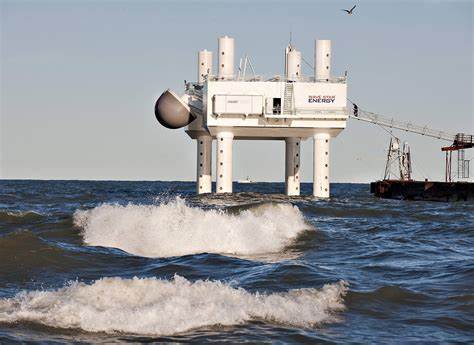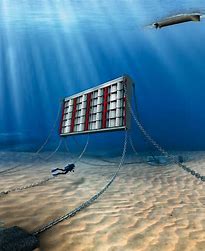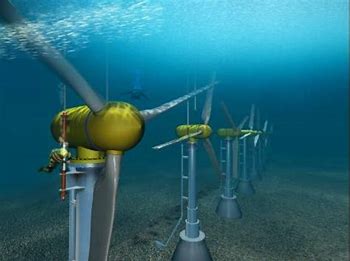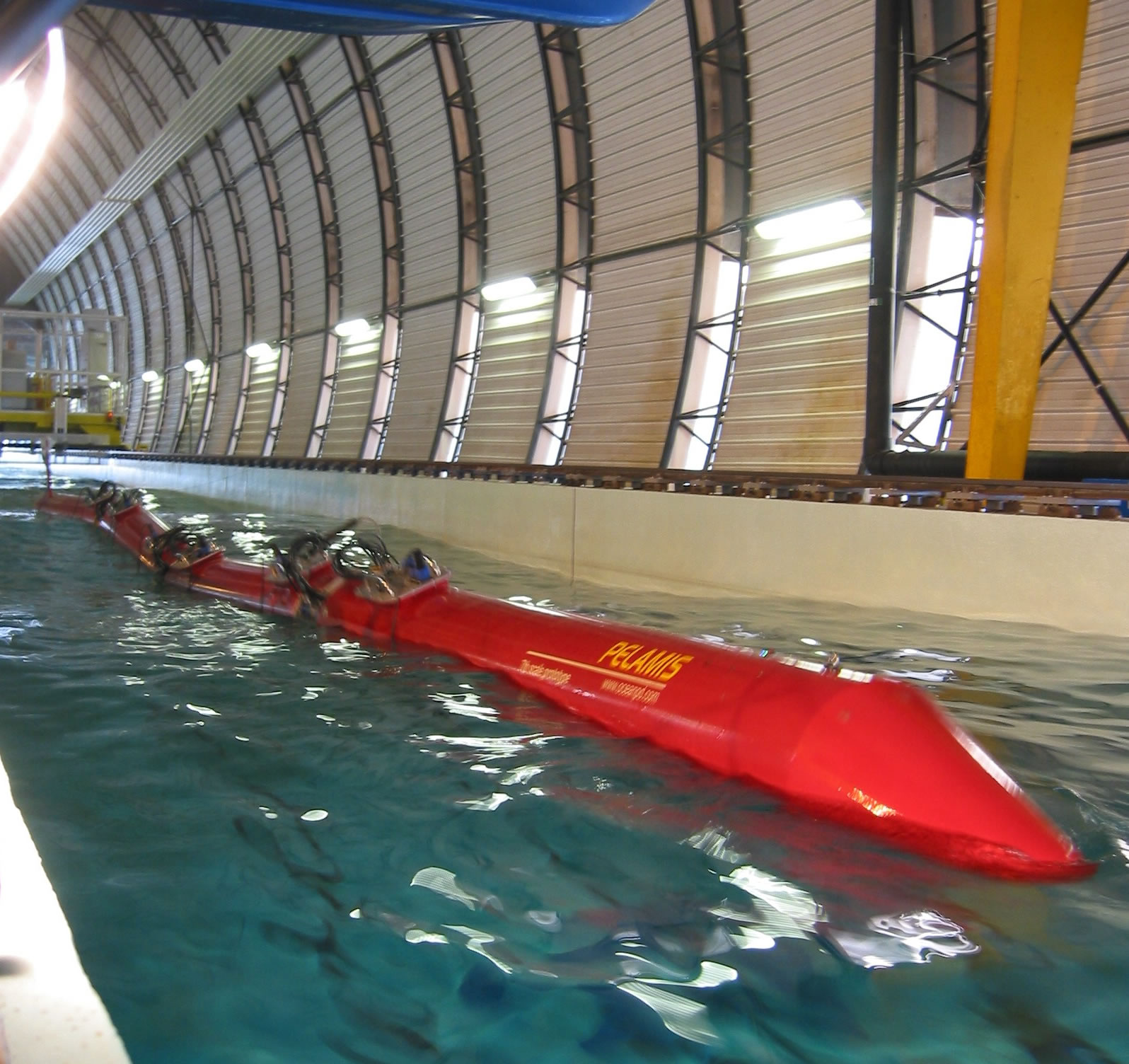
The Ocean Energy Revolution: Harnessing the Power of the Seas
Introduction
The Ocean Energy Revolution is an emerging field that aims to tap into the vast potential of ocean energy as a sustainable and renewable source of power. This article explores the history, key concepts, and potential benefits of ocean energy, as well as highlight successful case studies and ongoing developments in the field.
Historical Background
Ocean energy has been utilized for centuries, with early civilizations harnessing the power of tides and waves for various purposes. However, significant advancements have been made in recent decades in technology and understanding, leading to the potential for large-scale ocean energy production. The history of ocean energy is marked by milestones such as the development of tidal mills in ancient times and the creation of the first wave energy converter in the 19th century. Despite these achievements, the field has faced challenges in terms of cost, scalability, and environmental impact.
Key Concepts and Definitions
To fully grasp the potential of The Ocean Energy Revolution, it is important to understand the key concepts and definitions associated with this field. Ocean energy technologies can be categorized into several types, including tidal energy, wave energy, and ocean thermal energy conversion (OTEC). Tidal energy harnesses the power of ocean tides, while wave energy converts the motion of waves into usable electricity. OTEC utilizes the temperature difference between warm surface water and cold deep water to generate power. These technologies offer the potential for clean, renewable energy generation, but they also have limitations in terms of location-specific requirements and initial investment costs.

Main Discussion Points
The potential of tidal energy
Tidal energy is a promising source of ocean power, as it relies on the predictable and reliable nature of tides. By strategically placing tidal turbines in areas with strong tidal currents, a significant amount of electricity can be generated. This method has numerous advantages, including predictability, low environmental impact, and potential for job creation. Successful tidal energy projects, such as the MeyGen project in Scotland, have demonstrated the viability and scalability of this technology.
The promise of wave energy
Wave energy conversion involves capturing the energy from ocean waves and converting it into electricity. This method has great potential, as waves are a consistent and abundant source of energy. Wave energy projects have shown promising results in terms of power generation and environmental impact. For example, the Pelamis Wave Energy Converter in Portugal was able to provide electricity to thousands of households. However, challenges such as high initial costs and the need for maintenance in harsh marine environments need to be addressed for wider adoption.
The untapped potential of OTEC
Ocean thermal energy conversion utilizes the temperature difference between warm surface water and cold deep water to produce electricity. This technology has the potential to generate large amounts of power and provide cooling for onshore applications. However, OTEC is still in its early stages of development and faces challenges such as high capital costs, limited suitable locations, and potential environmental impacts. Despite these challenges, ongoing research and development efforts are exploring the feasibility and scalability of OTEC.

Case Studies or Examples
Highlighting successful ocean energy projects from around the world
The Ocean Energy Revolution has led to the successful implementation of various projects worldwide. For instance, the Sihwa Lake Tidal Power Station in South Korea is one of the largest tidal power plants in the world, providing clean energy to thousands of households. Another example is the Wave Hub project in Cornwall, UK, which serves as a testing site for multiple wave energy devices. These case studies demonstrate the progress and potential impact of ocean energy on traditional energy systems.
Specific examples of how The Ocean Energy Revolution has disrupted traditional energy systems
The Ocean Energy Revolution has disrupted traditional energy systems by offering a renewable alternative to fossil fuels. In countries with high dependence on imported energy, such as Ireland, ocean energy projects have the potential to increase energy security and reduce dependence on foreign sources. Additionally, the integration of ocean energy into existing power grids has the potential to create new economic opportunities and job growth.
Economic and environmental impacts of these case studies
The case studies mentioned above have demonstrated both economic and environmental benefits. By reducing reliance on fossil fuels, ocean energy projects contribute to the reduction of greenhouse gas emissions and combat climate change. Furthermore, the development of an ocean energy industry can create jobs and stimulate economic growth, particularly in coastal communities.
Current Trends or Developments
Recent advancements in ocean energy technologies
Recent advancements in ocean energy technologies have focused on improving efficiency, reliability, and cost-effectiveness. Innovations such as floating offshore wind turbines, advanced wave energy converters, and hybrid systems that combine different ocean energy sources have shown promise. These advancements are crucial for overcoming the challenges faced by ocean energy technologies and increasing their competitiveness in the energy market.
Ongoing research and development efforts in the field
Research and development efforts in the field of ocean energy are ongoing. Scientists and engineers are constantly exploring new materials, designs, and deployment strategies to optimize energy capture and maximize energy conversion efficiency. Ongoing research also aims to better understand the environmental impact of ocean energy projects and develop mitigation measures to minimize any potential negative effects on marine ecosystems.

Policy changes and initiatives supporting The Ocean Energy Revolution
Governments and international organizations are increasingly recognizing the importance of ocean energy as a sustainable source of power. Policy changes and initiatives, such as feed-in tariffs, grant programs, and research funding, are being implemented to support the development and deployment of ocean energy technologies. These policy changes are crucial for creating a supportive framework that incentivizes investment in the ocean energy sector.
Challenges or Controversies
Addressing the challenges and limitations of ocean energy technologies
Ocean energy technologies face various challenges, including high initial costs, technological limitations, and potential environmental impacts. These challenges need to be addressed through continued research, innovation, and collaboration between industry and academia. Additionally, the development of reliable and cost-effective energy storage solutions is crucial for maximizing the potential of intermittent energy sources like ocean energy.
Controversies surrounding the environmental impact of ocean energy projects
Ocean energy projects can have environmental impacts, such as potential changes to marine ecosystems and marine mammal interactions with devices. It is important to carefully assess and mitigate these potential impacts through environmental impact assessments, monitoring programs, and the implementation of best practices. Collaboration between industry, government, and environmental organizations is critical for ensuring that ocean energy projects are developed responsibly and sustainably.
Different viewpoints on the feasibility and scalability of ocean energy
There are differing viewpoints on the feasibility and scalability of ocean energy technologies. Some argue that the intermittent nature of ocean energy sources and the high initial costs make them less competitive compared to other renewable energy sources. Others believe that advancements in technology, economies of scale, and favorable regulatory frameworks will make ocean energy a viable and important part of the future energy mix. Continued research, development, and demonstration projects are needed to address these viewpoints and provide data-driven insights into the feasibility and scalability of ocean energy.
Future Outlook
Potential growth and expansion of The Ocean Energy Revolution
The future of The Ocean Energy Revolution looks promising, with increasing support from governments, advancements in technology, and growing public awareness of the need for clean and sustainable energy sources. As the field continues to mature, it is expected that ocean energy technologies will become more commercially viable and play a significant role in global energy production.
Emerging trends and technologies in the field
Emerging trends in the field of ocean energy include the development of multi-use platforms that combine energy production with other marine activities such as aquaculture and offshore wind energy. Additionally, advancements in materials, such as bio-inspired designs and the use of lightweight composites, show promise for improving the efficiency and durability of ocean energy devices.
Potential obstacles and opportunities for further development
While the potential of ocean energy is vast, there are still obstacles that need to be overcome for further development. These include technological challenges, high upfront costs, regulatory barriers, and public acceptance. However, with continued research, investment, and collaboration, these obstacles can be addressed, creating opportunities for a sustainable and reliable source of clean energy.
Conclusion
The Ocean Energy Revolution offers a promising solution to the global energy challenge by harnessing the power of the seas. Through advancements in tidal, wave, and OTEC technologies, ocean energy has the potential to disrupt traditional energy systems and provide a sustainable and renewable source of power. While challenges and controversies exist, ongoing research, policy support, and innovative solutions are paving the way for a future powered by the oceans.




